[ad_1]
Gerry Halpin MBE PPMAFA NAPA is a landscape painter using a variety of media. His work is essentially interpretive, intuitive and pushes towards abstraction, especially his coastally inspired paintings. Represented by a number of private galleries Gerry’s work is bought widely by clients and collectors in Britain and abroad. In this article Gerry gives us a fascinating insight into what inspires him, his working methods and his materials of choice.
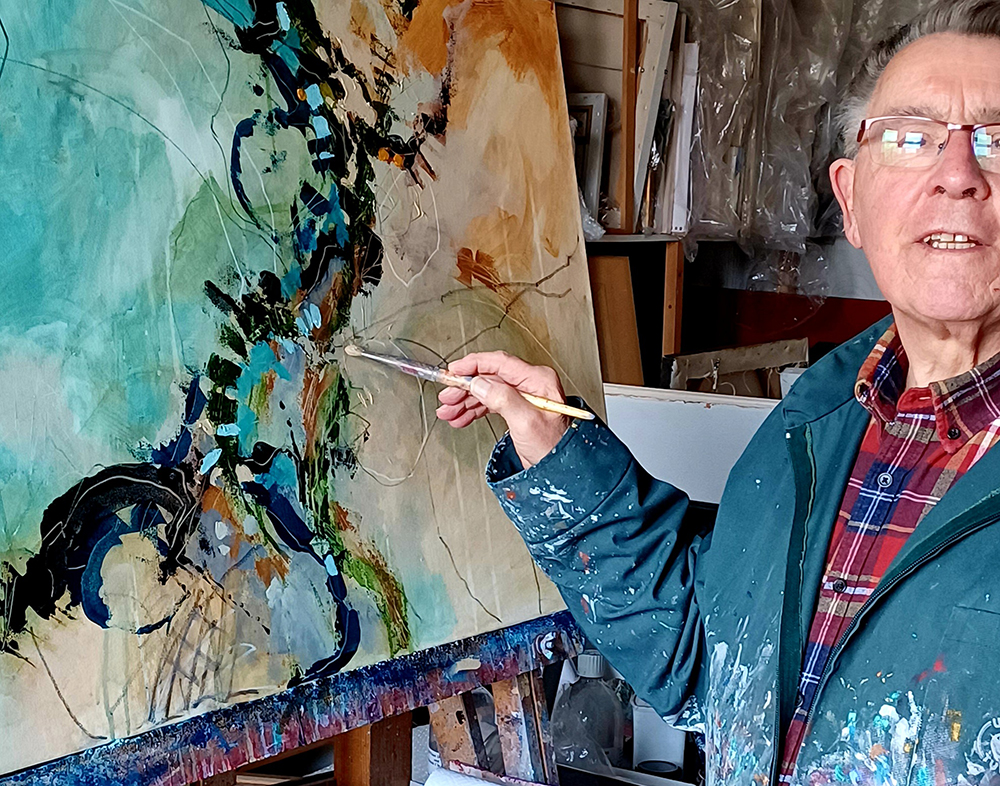
“…an artist must think, the eye is not enough, it needs to think as well” – Paul Cezanne Aix-En-Provence, France (1839 -1906)
My practice
Arriving at the studio each morning is the beginning of a marvellous and privileged opportunity to paint. To make visible those images which have been maturing in my mind from the sketches, I made after walking the moors and beaches where I find my sources of inspiration.
Working in an interpretive, expressive style, I am a landscape painter who, after rambling about those inspiring places and making on site ‘aide memoire’ sketches, prefers to paint in the studio rather than ‘plein air’.
For me, it is fundamental that I engage totally with the landscape. Recording those images which first caught my eye and which fired my imagination. Then returning to the studio where the equipment I need to complete the painting is to hand.
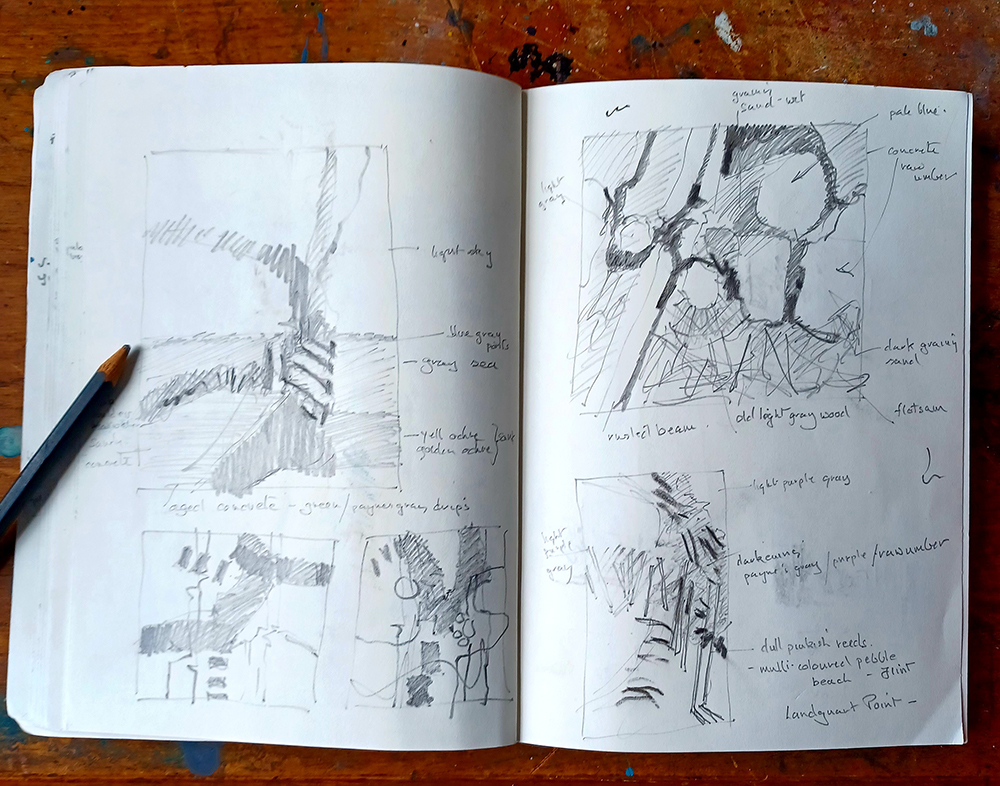
The importance of sketches
Initial sketches therefore are vitally important to my practice. I can’t emphasise enough how much I rely on them in the studio. My sketches are not detailed drawings, they simply record the essence of what I noticed and remind me of that when I start to paint. I avoid unnecessary detail which would distract me from those feelings and sensations integral to a particular image. They ensure that my mind also becomes involved in the process of painting.
I wholly agree with Cezanne, the eye is not enough, the mind also needs to ‘see’. This results in a personal and therefore unique painting. Paintings which after time and with consistency of approach, have become identified as the work of a particular artist.
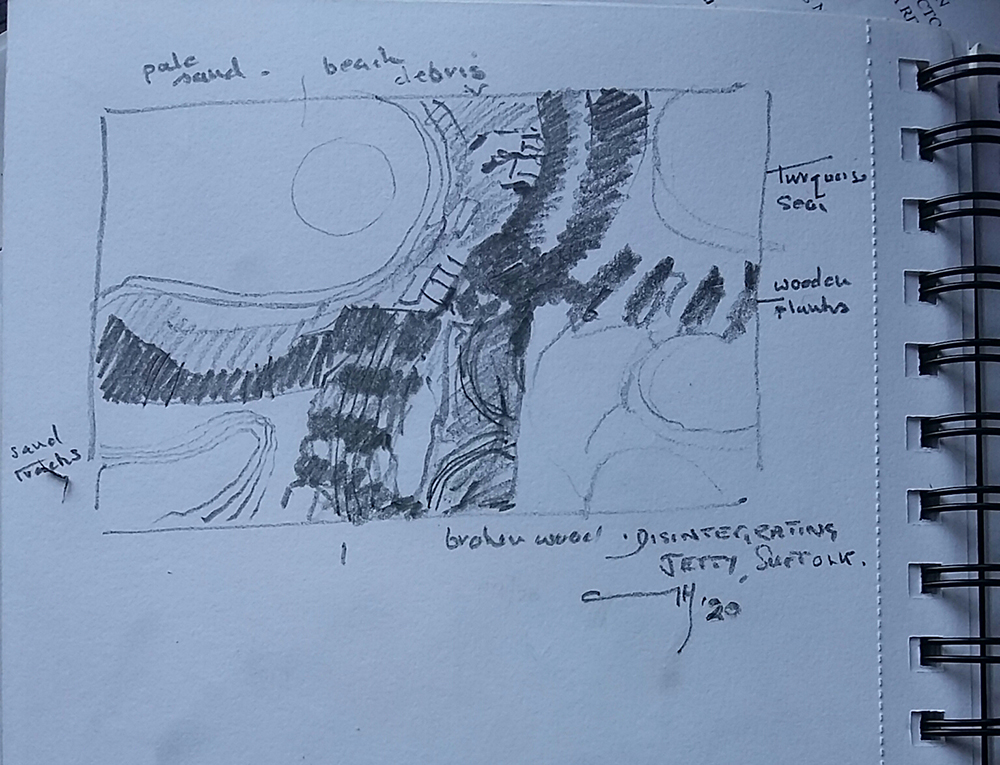
Sketching in the clouds
Prior to Lockdown, when air travel was available, I was fascinated by looking down on the landscape from an aircraft. Whether that was holiday flights or from occasional trips in a two seater piloted by a friend. I would draw quickly recording the marks revealed from looking down on the landscape. Recording marks geographically natural and marks made by man. The results, without including a horizon, were linear and the necessary drawing speed added to a sense of abstraction. I was aware that they might lean towards ‘pattern’, but the texture and mark making inherent in my approach avoided that kind of stylised result.
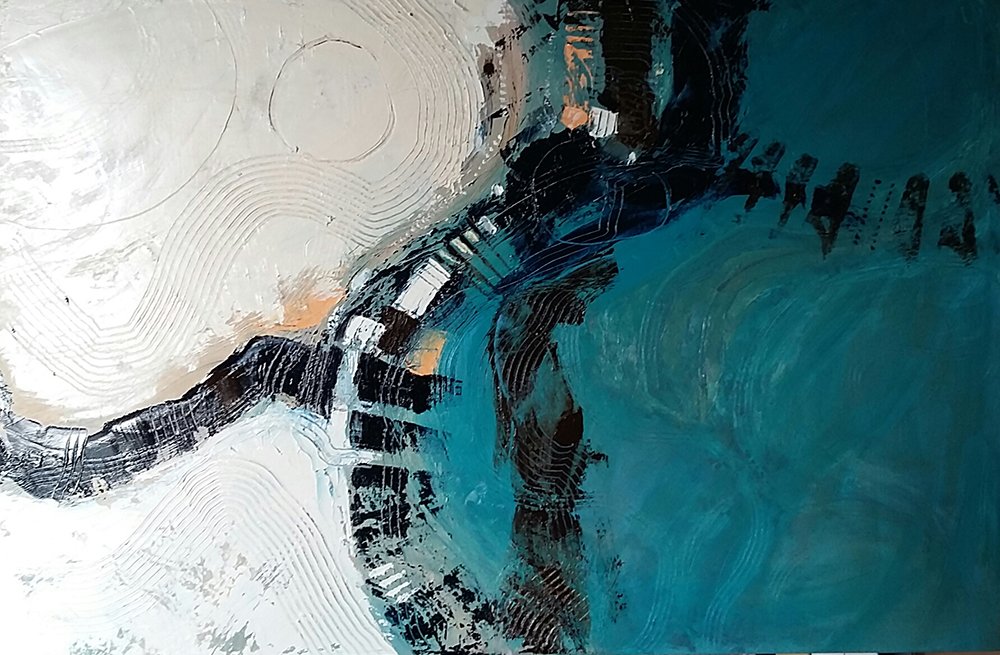
In her autobiography, ‘Out Of This Century’ Peggy Guggenheim made an observation. When flying home from San Francisco “the landscape below was amazing, better than any painting”.
I might agree with Guggenheim, but if one adds Cezannes’ notion to the mix, ‘seeing’ through the ‘mind’ as well as the eye and not being tied to the reality of the view, allowing feelings, sensitivity and personal interpretation to play their part, then the subsequent painting can be equally amazing.
The late Peter Lanyon is a marvellous example of an artist who painted the landscape from above. Recording the ‘sensations’ and not the descriptions of the observed world, from his many glider flights in Cornwall.
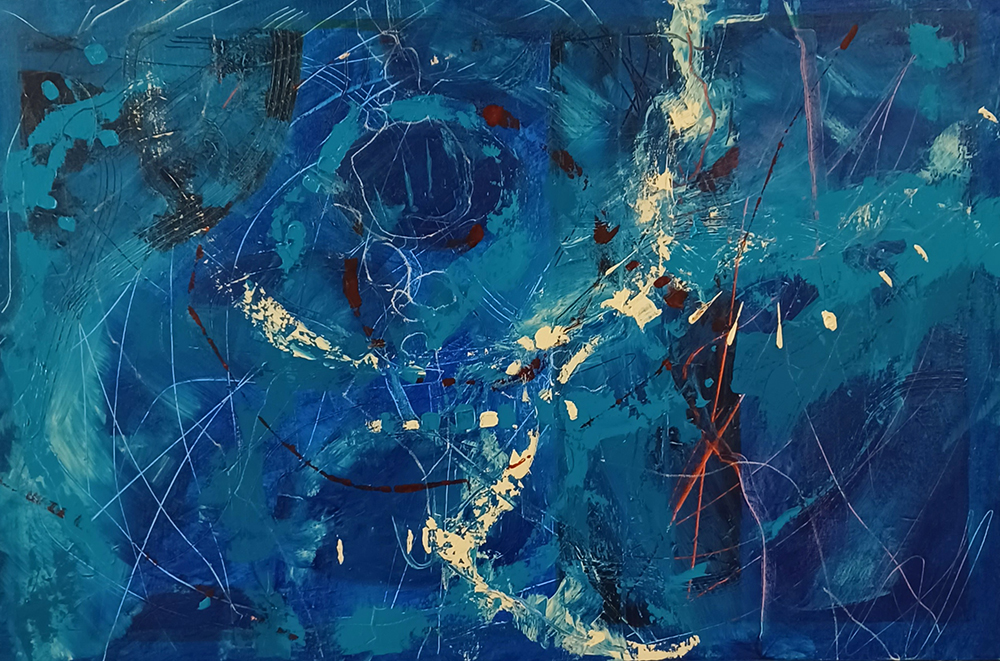
A new perspective
Since Lockdown, I haven’t flown and relied on my earlier sketches for starting points. I have always been especially interested in the possibilities presented by the interaction of the sea on the land. Recently I have become excited by the shoreline itself. Not from a great height but rather from head height if you will. Walking about and looking down. Focussing on the flotsam and jetsam left behind by the tide, strands of fishing nets, buoys and seaweed. Disused jetties, rusted breakwaters and twisted groynes along with tumbles of rocks and scatterings of pebbles and shells were all marvellous object of intrigue.
These were the objects of my eye. The swirl of the seawater between pools and the shift of object caused by the ebb and flow of the tide were additional considerations. Sensations of the mind, to be included somehow in the painting.
My coastal shoreline paintings are interpretive re-presentations of both objects and sensations. They are therefore quite uniquely abstract and gestural works.
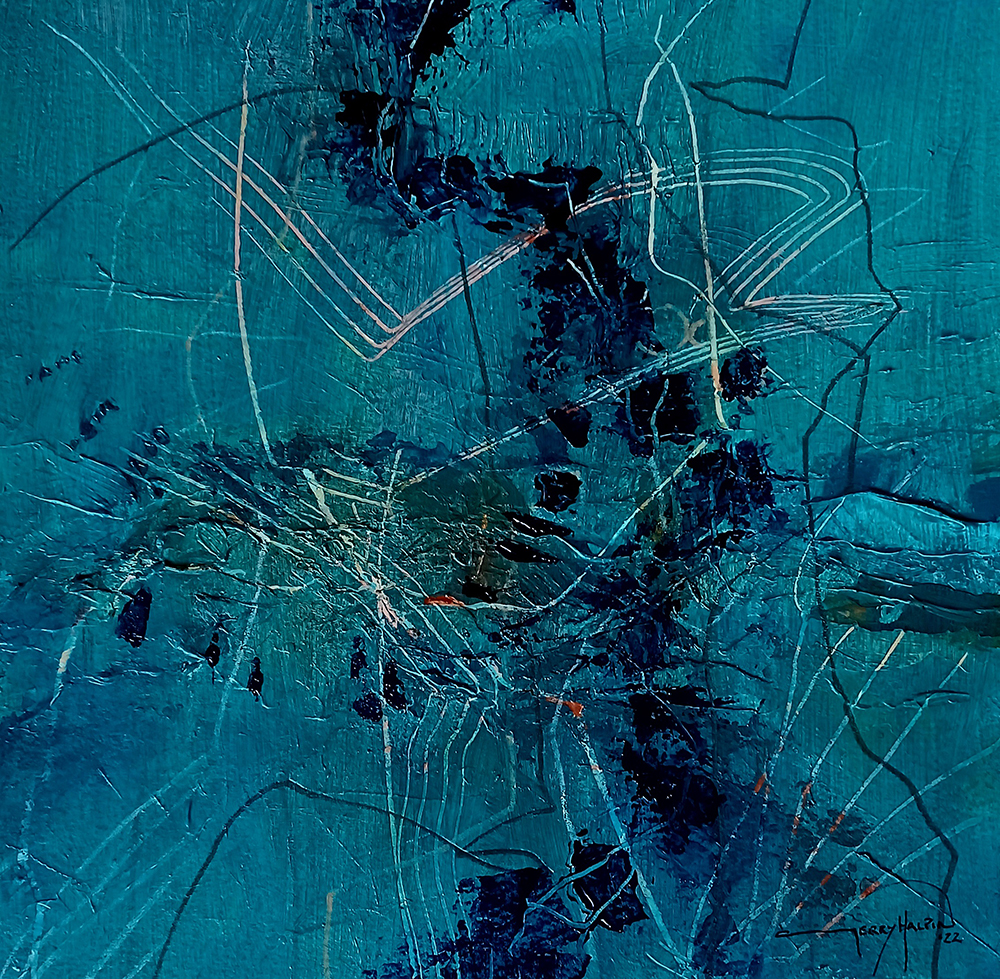
My materials of choice
I have recently returned to acrylics, having used the excellent Michael Harding oil paints on many of the earlier paintings. My main ingredients are Liquitex heavy body paint along with Liquitex flexible modelling paste for rough texture areas. I leave it to dry for a day at least before beginning to paint. I also use Liquitex Liquithick additive to body up the paint, it is excellent in not paling out the colour. These all work perfectly well on either canvas, extra primed or paper primed with a gesso primer. Arches or Saunders Waterford 300lb paper is splendid to use which I BluTack it to a board.
The benefits of painting with acrylics
Being a restless painter, I find the quick drying of acrylics suits my method of painting well. It allows me to scratch and scrape with all manner of implements to achieve rugged textural effect. The dry surface readily accepts pastel and charcoal marks that I need to include. Overpainting is achieved quickly and alterations can be made easily as a result of those important moments of contemplative sitting and looking from the ‘minds eye’.
Gerry Halpin is a Member, a past Trustee and the immediate Past President of Manchester Academy of Fine Arts (MAFA) and he has exhibited widely since his election to Membership in 2001. Appointed MBE in 2009 for his work in Art and Charities. In 2022 he was invited to become a member of the National Acrylic Painters Association (NAPA). His paintings have been exhibited with the ROI, RSMA and RI in the Mall Galleries, London. In the 2014 ROI exhibition, he was awarded the Menina Joy Schwabe prize for an outstanding work.
You can see more of Gerry’s work on his website. A selection of his paintings can be seen in an exhibition at the Technically Brilliant Gallery, Warrington, until mid June and permanently at Saul Hay Gallery, Manchester.
[ad_2]
Source link


:strip_icc()/BHG_PTSN19720-33d9cd22f6ab49e6a21982e451321898.jpg)

More Stories
BSA Film Friday: 11.25.22 | Brooklyn Street Art
FEATURES – Art in VR with Casey Koyczan
Julie Karpodini: Painting Instinct – Jackson’s Art Blog